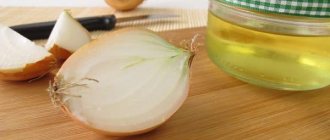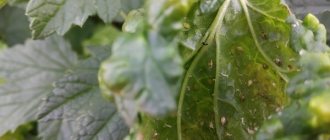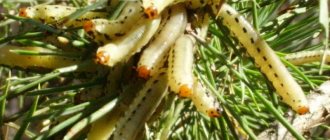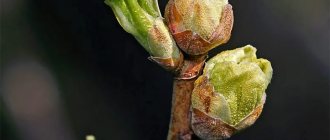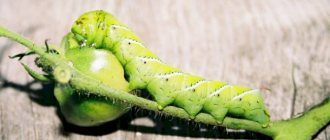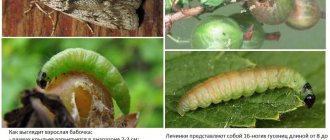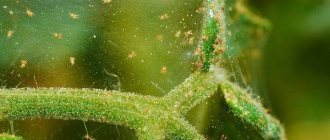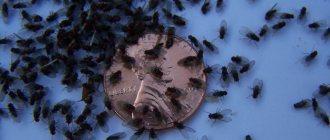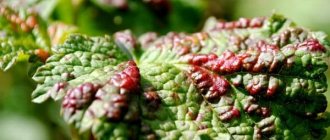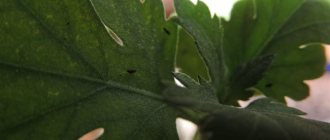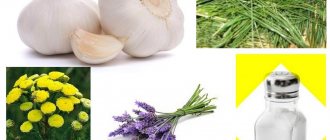Yulia Vasilyeva Learned how to deal with caterpillars
My family really loves currants, and they contain a lot of vitamins. Many harmful insects strive to feast on currant fruits and leaves. Butterflies lay eggs. Larvae-caterpillars emerge from them. Until they reach a certain age, they feed on the greenery of the bush. This causes great damage to the future harvest. I will tell you about ways to combat caterpillars.
Know methods of destroying caterpillars
Butterflies lay eggs in early spring and before winter. After overwintering in the soil under currant bushes or in the stems, the larvae crawl throughout the plant. Until the moment of pupation, the caterpillars intensively feed on the green mass of the bush. They completely eat the leaves.
For example, moth caterpillars damage large berry fruits, gall midge larvae cause damage to shoots and berries, and currant glassworm destroys the entire bush, damaging the stems
To combat pests, two options are used: chemical-biological and folk. Lovers of all things natural can try infusions and decoctions of fragrant herbs, mustard powder, and tobacco dust.
Those who want to radically get rid of a dangerous pest can use insecticides. Bioinsecticides (preparations based on beneficial bacteria) are less dangerous to human and plant health.
Understand the signs
Successful eradication of butterfly larvae depends on how early their appearance is noticed. It is necessary to regularly inspect currant bushes and begin treatment at the first symptoms.
| 1. The leaves are withering Infections by larvae inside the stem lead to yellowing and wilting of the leaves of the bush and drying out of the shoots. 2. Leaves curl and cobwebs appear Curled leaves indicate the appearance of a leaf roller butterfly caterpillar. To eat a leaf, the caterpillar curls into it and then entangles it with a thin web. The leaf dries and falls off. Caterpillars readily eat buds. 3. Blisters form on the leaf plate The leaf gall midge lays eggs on the foliage. The masonry, being inside the sheet, provokes the appearance of light green or yellow swellings on the surface |
Warning
To protect currants, a whole range of measures is used: preventive, agrotechnical, mechanical, biological and chemical.
To prevent the spread of pests and diseases, purchased seedlings are kept in quarantine schools, and upon purchase the quarantine certificate is checked.
Agrotechnical measures, including watering, weeding, fertilizing and pruning plants, allow you to grow strong and healthy currants; pests attack them only during a reproduction outbreak. They also try to select varieties that are resistant to pests living in the area.
Mechanical methods involve manually collecting and shaking off caterpillars, tearing off spider nests and rolled leaves, followed by burning them.
Biological methods are based on the use of natural enemies of pests: birds, amphibians, insects and microorganisms. Installing nesting houses and bird baths in the garden will attract the gardener's first assistants - sparrows and tits, and other insectivorous birds.
Instead of chemical insecticides that are dangerous to humans, nowadays it is possible to use biological insecticides. Their action is based on the destructive action of fungi, viruses, and entomopathogenic nematodes.
There are quite a few names of bioinsecticides suitable for killing caterpillars: Aversectin-S, Avertin-N, Bitoxibacillin, Dendrobacillin, Lepidocid, Entobacterin, Nembakt.
However, in the event of a strong outbreak of caterpillar reproduction, it is necessary to use chemicals that, although unsafe, very quickly cope with pests: Aktara, Akarin, Aktellik, Apache, Bi-58 Novy, Inta-Vir, Fufanon-Nova.
The gardener makes the decision on how to treat currants when caterpillars appear depending on the condition of the plant, the number of pests and the time of their appearance.
Be able to distinguish between types of caterpillars
The table shows the characteristics of the most common species of butterflies whose caterpillars parasitize currants.
You need to know how to get rid of pests in order to choose a more suitable option. To remove some, the best way is agricultural work; others can only be destroyed with insecticidal preparations:
| Leaf roller caterpillar What it looks like:
What it eats: Young larvae bite into unopened buds, eating them completely. Feeding on young leaves, they curl into them, entangling them in cobwebs. In case of danger, they fall and hang on a thin web. In this form they are carried by the wind. Adults eat the ovaries and damage the surface of the fruit. Fighting options: 1. In April, the caterpillar, emerging from the ground, pupates. Apply insecticide treatment in April-May. 2. The butterfly lays eggs several times during the summer season. Repeat insecticide treatments after flowering and harvesting. 3. The larvae overwinter in the soil and in dry leaves. In the fall, remove foliage from the tree trunk and burn it. Dig around the currant bush | |
| Currant gall midge larvae Black currants are parasitized by stem, flower and leaf parasites. What it looks like:
What it eats: Stem gall midges damage young shoots, destroying them from the inside. The leaf insect eats away the soft tissue in the leaves. Damaged leaves shrink, dry out and fall off. Fighting options: 1. Gall midge is a small mosquito. At the end of September it lays its last eggs in the soil under the bush. Digging should be done in late autumn and the tree trunk circle should be mulched. 2. In spring, the larvae pupate in the ground. At the end of April, adult insects emerge. During this period, put peat or humus mulch under the bushes. Treat the surface of the bush with Karbofos. 3. Throughout the season, sprinkle the soil around the bushes with tobacco dust, ash, and dry lime. 4. Lays eggs several times over the summer. Repeat insecticide treatment after color fades. | |
| Moth gooseberry caterpillar What it looks like:
What it eats: Completely eats gooseberry and currant leaves. Fighting options: 1. They wait out the winter in the leaves under the bush. Autumn cleaning of fallen leaves will reduce the number of caterpillars in the spring. 2. In June, noticeable pupae (yellow with a black stripe) appear on the branches of bushes. Remove them manually. 3. For radical destruction, apply insecticides in early spring | |
| Glass currant larva What it looks like:
What it eats: The caterpillar parasitizes black and red currants inside the stems and young shoots. They eat the whole middle, the stem dries up. Fighting options: 1. The larvae feed and overwinter inside the shoots. 2. The main method of control is timely pruning of infected branches. Treat the cut area with garden varnish. 3. In case of massive damage, remove the bush completely at the root. Old bushes are most at risk. 4. At the end of May, begin to loosen the soil under the bushes. Glass pupae are formed there. Along with loosening, add tobacco dust, ground pepper, wood ash in a ratio of 3:2:1 |
In addition to the above pests, currants can be eaten by green caterpillars of the gooseberry sawfly and white fluffy caterpillars of the currant sawfly. The latter insects only harm blackcurrant berries and are found mainly in the Leningrad region.
Furrow mower: spring treatment of blackcurrant bushes from pests
Sulcata mower Otiorrhynchus sulcatus Fabr.
Weevil beetle 8-10 mm long, pitch-black, with a metallic sheen, hips with a tooth. The rostrum is clearly expanded at the apex; it has a deep and wide longitudinal groove. Spring treatment of currants against pests of this type includes collecting and burning all plant residues. Then the treatment of currant bushes from pests is carried out by spraying them with insecticides.
The larva is small, white, legless, cylindrical, somewhat curved, with a brown head. The larvae feed and develop in the roots of plants, making passages in the wood. The beetles damage the leaves, eating the edges in small areas, shallowly, in a patterned manner, and also damage the buds. The furrow mower often damages currants, raspberries, grapes, apricots and deciduous shrubs and trees.
Control measures. Preventive treatment of black currants against pests after flowering with one of the drugs: fufanon, kemifos, actellik.
Method 1. Use folk remedies
| Herbal infusions and decoctions 1. Celandine decoction:
Irrigate the bushes once a week. 2. Garlic infusion:
Prepare a working solution in the ratio of 100 ml of infusion per 10 liters of water. Spray currants and other plants. Repeat the procedure every 3-5 days until results appear. 3. Decoction of tomato tops
Treat currant bushes. Can be used frequently, until the caterpillars leave. To fix infusions and decoctions on stems and leaves, add laundry soap (40 g) to the working solution. | |
| Agro-mechanical work using ash, mustard, ground hot pepper 1. During spring and autumn processing, remove damaged branches. 2. In the fall, dig up the ground around the bush, preventing the larvae from burrowing deeply into the soil. Then mulch with straw or sawdust in a layer of 10–15 cm. 3. In early spring and autumn, thoroughly clean the tree trunk area of fallen leaves. Some caterpillars spend the winter wrapped in a dry leaf. 4. Sprinkle the bush space with a mixture of hot pepper, mustard and wood ash (at the rate of 2-3 tablespoons of mixture per bush). 5. Starting from the end of May, regularly loosen the soil around the bush with the addition of wood ash or tobacco dust. 6. If the bush could not be saved, cut it down at the root. Important! All removed foliage and removed branches (bushes) should be burned |
Prevention
Preventing caterpillars from appearing on currants is much easier than getting rid of pests. Do not neglect simple but effective prevention methods:
- Shrub pruning . The annual removal of old and diseased branches prevents the larvae from overwintering in cracks in the bark. Regular thinning of shoots helps to avoid crowding in the center of the bush, where caterpillars like to settle.
- Removing plant residues . In the fall, they remove fallen leaves and plant debris - a possible winter refuge for the larvae of harmful insects.
- Digging the tree trunk circle in spring and autumn helps to destroy wintering pests. Weeding and loosening the root zone in the summer helps prevent the breeding of several generations of caterpillars during the season.
- Mulching . A layer of mulch 6-8 cm thick creates an obstacle to the path of pests overwintering in the soil. Adding mustard powder and tobacco dust to mulching materials increases the effectiveness of protection.
- Regular inspection of currant bushes . Allows you to identify caterpillars at an early stage of infection and begin control measures in time.
Caterpillars cause serious damage to currants and can cause crop loss and death of the bush. Early detection of pests helps prevent mass damage. Successful control of caterpillars includes a competent combination of industrial drugs and folk remedies, and the implementation of preventive measures.
Method 2. Use biologically active and chemical preparations
Before treating with chemicals, you need to try traditional methods. If they do not bring results, and if there is a large invasion of caterpillars, you can use biochemical substances.
With frequent or improper use, drug toxins accumulate in the plant. In the future, this may harm human health and destroy the currant bush.
Option 1. Insecticides
| 1. Karbofos Active substance:
Release form:
Widespread insecticide based on organophosphorus compounds Effective against leaf rollers, glass beetles, aphids, and mites. Dosage:
Processing method: Use the entire solution immediately after dilution. Sprinkle the currants generously with the working preparation. The solution should be applied to all parts of the plant in large quantities. When to use:
The procedure should be carried out in warm weather without wind, in the morning or evening closer to sunset. | |
| 2. Danadim Active substance:
Release form:
Systemic insecticide of contact-intestinal action An effective drug against stem and leaf gall midges, leaf rollers, and aphids. Dosage:
Water for diluting the drug must have an acidity of no more than 7, otherwise the effect will be neutralized. Use only fresh solution. The initial appearance of butterfly larvae should be monitored. Thoroughly irrigate all parts of the bush. When to use:
| |
| 3. Spark Bio Active substance:
Release form:
Contact-intestinal insecticide Within a week it destroys aphids, leaf rollers, moths, and moths. Dosage:
Processing method: Use the prepared solution immediately after preparation. Spray all parts of the currants. Carefully irrigate the stems near the soil; it is better to cover the circle near the trunk with film. When the insecticide gets into the soil, it kills beneficial microorganisms and earthworms. When to use:
The drug is effective at high temperatures (up to +28 °C) |
Lapirula
“The drug “Iskra” against pests can be used until harvest. With its help, you can treat those plants whose flowers are adjacent to ripening fruits. It has been tested outdoors and in greenhouses.”
Source fialka.tomsk.ru
Option 2. Bioinsecticides
Products containing waste products of beneficial fungi and bacteria are safe when stored and used correctly.
| 1. Bitoxibacillin Active substance: spores of the bacterium Bacillus thuringiensis var. thuringiensis. Release form :
Bioinsecticide with intestinal action Suitable for destroying caterpillars of leaf rollers and moths. Dosage:
How it works: Caterpillars, feeding on leaves, co-absorb the drug. The poison begins to act after 3–5 hours. Damages the gastrointestinal tract of the insect, it stops feeding and dies from starvation. In adults, the reproductive function decreases. Poisoned individuals are completely eliminated within 5 days. Application: 1. Use the working solution after preparation within 3 hours. 2. Irrigate the entire plant generously. 3. Carry out the treatment after the color has fallen off. 4. Reapply after 8 days. 5. Monitor the possibility of precipitation (easily washed off with water). 6. Apply early in the morning after the dew has dried or in the evening before it falls. For greater effect, the drug can be used with insecticides | |
| 2. Fitoverm Active substance: waste product of the fungus Streptomyces avermitilis Release form:
Bioinsectoacaricide with contact-intestinal spectrum of action Used against leaf rollers, moths, and aphids. Dosage:
How it works: The poison enters the stomach through food consumption, causing paralysis and further death of the insect. Application: 1. Treat late in the evening; under sunlight, the active substance loses its properties. 2. Irrigate the currant bush during the growing season. After 2 days, repeat the treatment. Then again - a week later. 3. Can be used with other insecticidal preparations |
rzhulya
«The drug is active against adults, but does not affect larvae. Therefore, re-processing is necessary.”
Source irecommend.ru
Currant bud moth
This “piebald” butterfly, unlike the previous one, prefers white and red currants, and early and mid-ripening varieties. The insect is easily recognized by its long, pubescent wings with large brown-white spots and a yellow head. The currant bud moth itself is not so small - it reaches 17 mm in length. Insect larvae are half the size of the adult and at different stages of development are colored from orange-red to gray-green with a dark head.
Moth caterpillars wait out the winter in cocoons, in cracks in the bark and at the base of the bush. In early spring, they emerge from the cocoon, climb onto the plants and penetrate into the pulp of the apical buds, gnawing it from the inside. One such larva can damage up to seven currant buds. Shortly before the currant flowers begin to bloom, the caterpillars descend into the soil, where they pupate. During the period when the ovaries appear on the bushes (late spring), adult moths emerge from the pupae and lay eggs in the green ovaries of the berries. The larvae that hatch from the eggs feed on the seeds of unripe fruits for some time, and before they ripen, they descend to the base of the bush, where they again settle for the winter.
An infected plant is significantly stunted in growth, its defenses and productivity are reduced, such bushes go into winter exhausted (they look frozen or burned), and may not tolerate frost well. Berries of moth-affected currants are characterized by false premature ripening. Severely damaged bushes may die.
Adult currant bud moths can fly from one plant to another, as well as to neighboring areas, to lay eggs. The pest can also spread through planting material.
Caring for currants
| Spring 1. At the beginning of April, apply nitrogen fertilizers. Sprinkle the area under the bush and cover it with soil. 2. Trim dry and weak branches and stems. Disinfect the cut areas with garden varnish. 3. Remove leaves from under bushes, including gooseberries and raspberries. 4. In early May, loosen and apply wood ash at the root. 5. Sprinkle the tree trunk circle with mustard. 6. Spray plants with bioinsecticides, if necessary, insecticides | |
| Summer 1. Inspect the bushes for damage to stems and leaves. If you find bulges on the shoots, cut off the infected branch. 2. Twisting and deformation of leaves, cobwebs on leaf plates indicate the need to treat with insecticidal preparations | |
| Autumn 1. Trim old, weakened or damaged stems. The currant glass will lay its last clutch in them. 2. Clear the area around currant, raspberry, and gooseberry bushes from withered foliage. 3. Carry out the final treatment with insecticides. 4. In late autumn, loosen the soil under the plant to bring up the larvae of butterflies overwintering in the soil |
Symptoms and signs of damage
The first sign of currant infestation by caterpillars is that there are a lot of butterflies hovering around the plants. They fly to lay eggs, from which larvae hatch. Most species feed on young growth, which is where you should look for them first. Infected leaves are underdeveloped, “leaky,” nibbled, twisted, and covered with cobwebs.
Currant inflorescences and ovaries affected by larvae are more difficult to recognize than eaten leaves, but regular inspection shows that they become deformed, change color, dry faster, and the berries become smaller. The presence of gall midge and glassworm larvae can be noticed by the deformation (swelling) of currant stems, their weakness, fragility and low yield. Sick branches rot and die.
Remember
- Do not plant currant bushes next to raspberries. The currant glassworm caterpillar feeds on currant stems. The adult insect prefers raspberry berries.
- Do not plant currants next to gooseberries. Berry bushes have a common pest: the gooseberry sawfly and the gooseberry moth.
- Use laundry soap. Soap is an excellent folk remedy. In early spring, at the stage of bud formation, treat currant bushes with hot water and a solution of laundry soap. Effective against larvae in the soil.
- Use insecticides when absolutely necessary. Most drugs are dangerous for pollinating insects. Some, when ingested, destroy earthworms and beneficial microflora.
Other ways to fight
Experienced summer residents practice simple but effective methods of controlling caterpillars on currants without the use of pesticides:
- Processing with boiling water . It is carried out before the buds open. Currant branches are tied into a bunch and poured with hot water, killing overwintered parasites. Adding creolin or laundry soap to hot water increases the effectiveness of the procedure.
- Manual collection . The bushes are inspected daily, caterpillars are collected, and special attention is paid to egg clutches located on the inner surface of the leaves. The collected pests are destroyed.
- Shaking off . A light cloth or paper is spread under the plant, and the currant branches are shaken thoroughly. Fallen caterpillars are immediately eliminated before they have time to crawl away.
- Attracting birds . Tits, starlings, and wagtails are the gardener’s faithful assistants in the fight against caterpillars. One bird can destroy more than 100 parasites per day. The installation of birdhouses and feeders in winter helps to populate the summer cottage with useful birds.
- Growing plants with repellent properties . Calendula, nasturtium, and marigolds are planted between currant rows. Phytoncides and essential oils repel adult pests and make it uncomfortable for caterpillars to stay on the bush. An apothecary garden with fragrant herbs - lavender, sage, valerian, mint - will undoubtedly be beneficial.
- Attracting entomophagous insects . Ground beetles, fire beetles and ichneumon wasps are formidable enemies of caterpillars. To populate the currant plantation with beneficial insects, honey plants and umbrella plants are grown nearby, and sheets of plywood or bricks are placed to shelter ground beetles during the daytime.
Alternative control measures are not able to completely destroy caterpillars on currants, but significantly reduce the number of uninvited guests on the bush.
